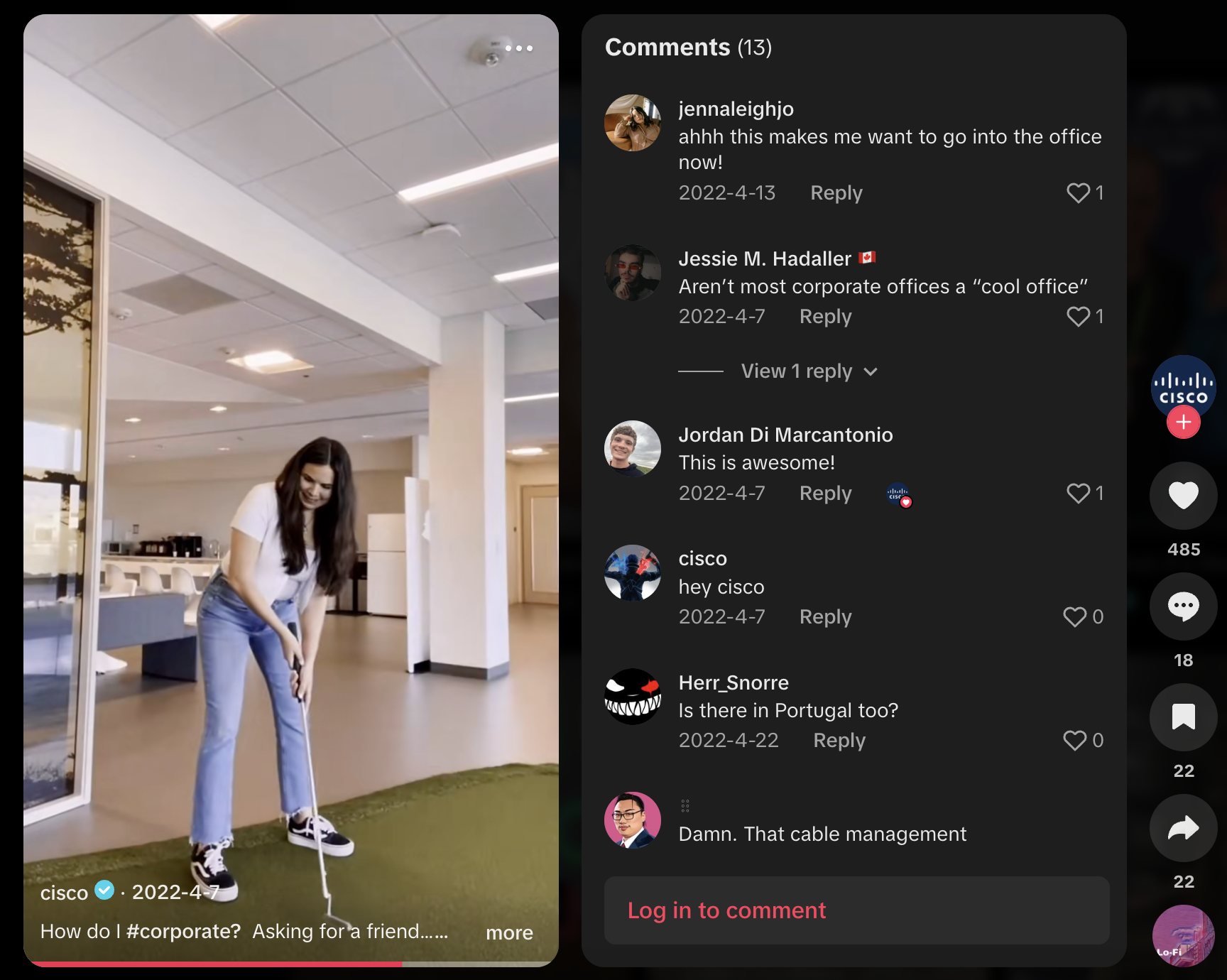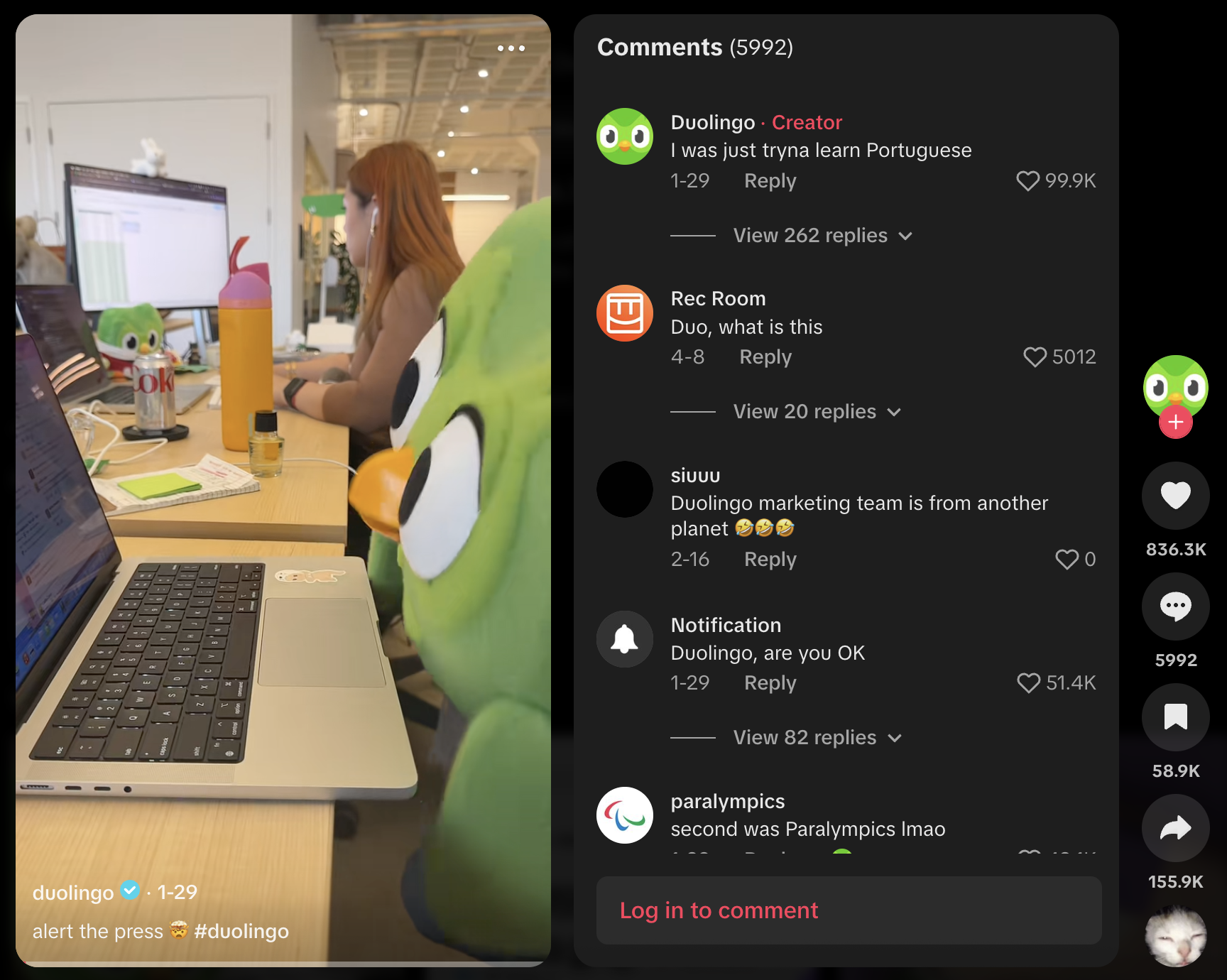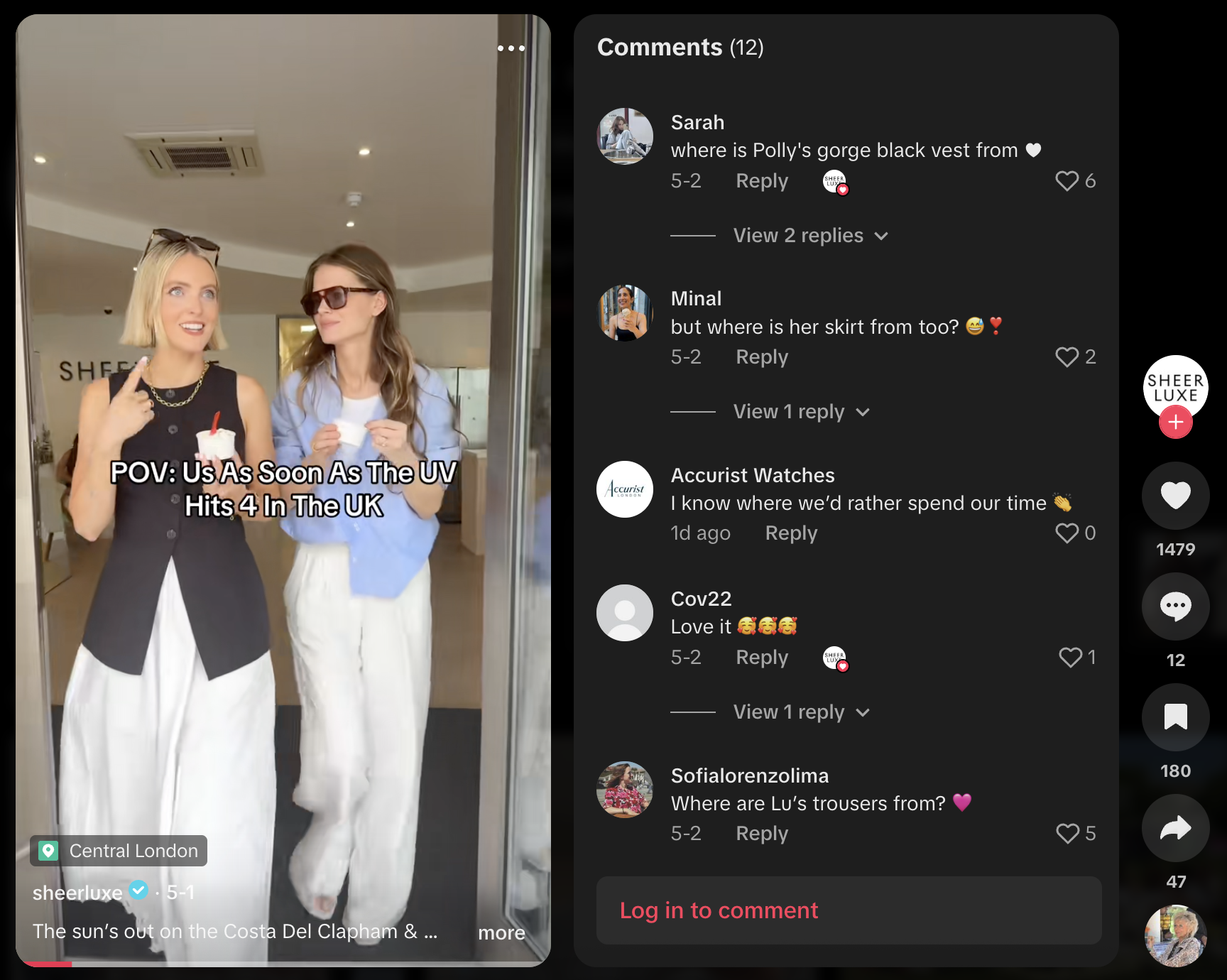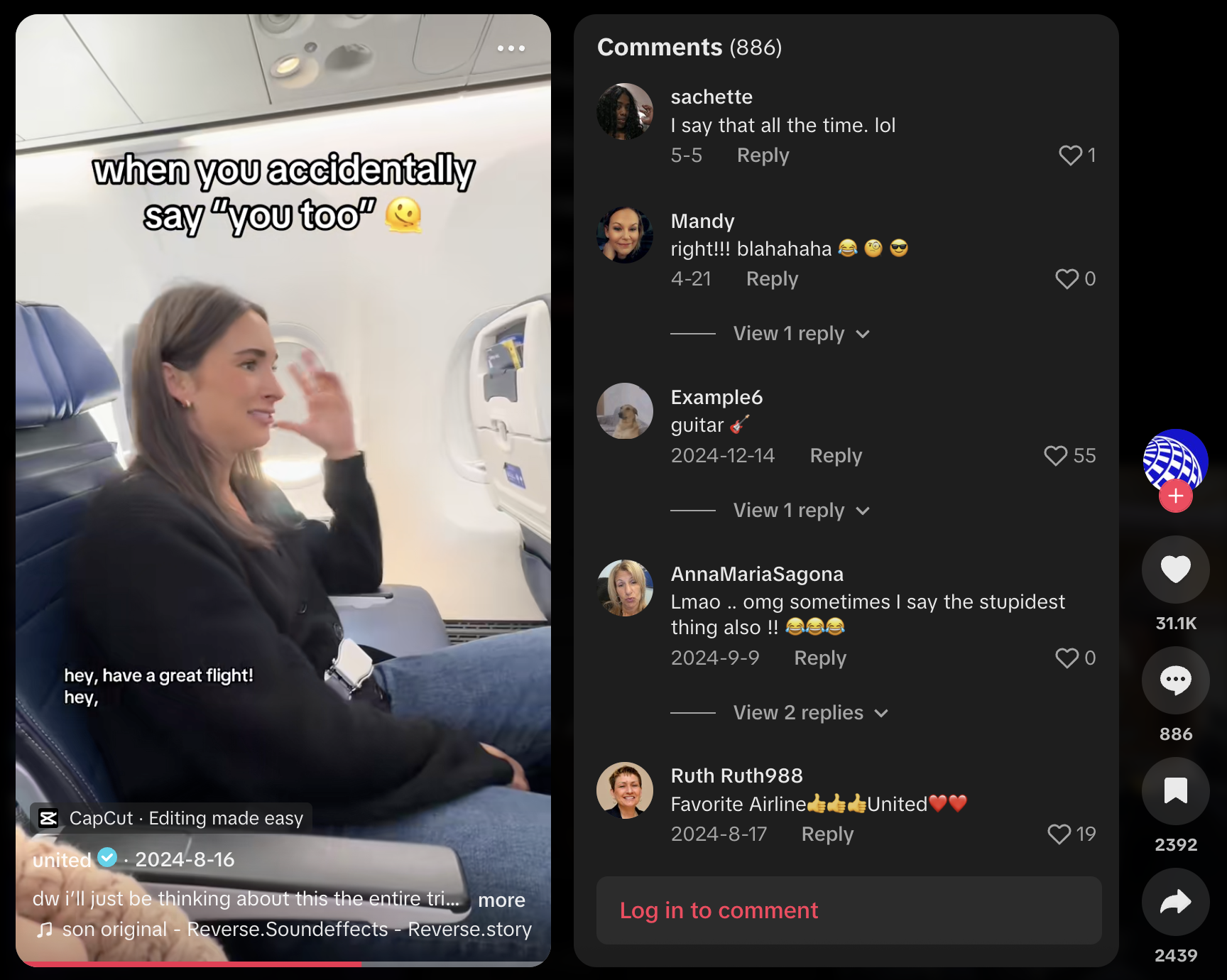
If we used to think people needed fame to influence others, netizens would probably disagree today. There are countless examples of ordinary people influencing the internet space. Spontaneous moments, unexpected viral videos, or funny skits often succeed in making their way into the spotlight. And when a brand decides to create content starring ordinary people, the results show no difference.
People love seeing real and relatable figures sharing stories from different perspectives. While influencers often promote a brand from their perspective as public figures under certain collaboration agreements, ordinary people can share stories from the brand’s perspective, or even their own as everyday individuals. And who can do this better than anyone else? Of course, the employees themselves.
These employees can represent the brand from the inside with multiple interesting ways a celebrity cannot match. This is one of many reasons brands share content generated by their employees. A recent study reported that companies implementing employee-generated content experienced a 27% increase in online engagement and a 19% rise in sales within the first year.
Does this mean employees’ influence can match influencers’ appeal? We’re here to get down to the nitty-gritty of this content type, so you can decide if you want to give your employees a chance to explore their creativity. Probably, you’ve been hiring a potential influencer all along.
What is Employee-Generated Content (EGC)?
 Employee-Generated Content, or EGC, is a specific type of User-Generated Content (UGC) created by a brand’s own employees. It features employees sharing their work, experiences, or company-related stories. This is often shared on their personal social media accounts. Sometimes, brands repost or even upload this employee content directly on official channels - and even then, it’s considered EGC because it highlights employees instead of influencers or random users.
Employee-Generated Content, or EGC, is a specific type of User-Generated Content (UGC) created by a brand’s own employees. It features employees sharing their work, experiences, or company-related stories. This is often shared on their personal social media accounts. Sometimes, brands repost or even upload this employee content directly on official channels - and even then, it’s considered EGC because it highlights employees instead of influencers or random users.
EGC comes in many formats. They can take the form of single posts, photo carousels, mini vlogs, or the most loved one: reels. Topics also vary widely such as behind-the-scenes, candid videos, CSR activities, sneak peeks, viral dance trends, or even silly skits that burst laughter. You might have seen hashtags like “#LifeAtCisco” or “#adayinmylife”, where the employees give a glimpse of their day at work. Content like this is often done voluntarily by employees outside their primary job responsibilities.
The good things EGC brings to a brand
When employees become actively involved as storytellers for your brand, the benefits can go further. It’s more than filling your content calendar or keeping your brand’s social media relevant. Here’s what EGC can do, that will make you understand why more companies are making it part of their marketing strategy:
1. It cuts distance between your brand and audience
According to a Sprout Social survey in 2023 that involved 1,000 consumers, 87% of Millennial participants felt more connected to brands when they saw employees sharing information online. Also, 81% think it’s important for employees to post about their workplace on social media. So, EGC is a good way to break down barriers and distance between your brand and potential customers.
2. More trust from customers
EGC humanizes your brands in ways traditional marketing cannot. This is because audiences see genuine moments, everyday experiences, and personal stories from individuals who live the brand every single day. This makes the brand appear more approachable and relatable.
Although your employees probably just show up as front liners for your brand to entertain audiences within seconds, this helps the audience get a peek behind the curtain. EGC transparently shows the real people behind the brand, making them seem honest and trustworthy. An Edelman press release stated that employees are among the most trusted of all company spokespeople, even more than the CEO. Remember, customer trust fuels brands like gas fuels vehicles.
3. Content that saves cash
EGC saves your content creation budget in the best way possible. It utilizes your employees as content creators, can be done using smartphones, and doesn’t need an additional production team. This is because the point of EGC isn’t perfection, it’s the idea. It’s not a secret that natural, minimally edited content can go viral because of the moment they capture or the trends they jump into. A few seconds of funny conversation with a hilarious twist often performs better than a polished post worth hundreds or even thousands of dollars.
4. It widens your reach and improves brand awareness
LinkedIn Business Research reported that an employee network has 10x more connections than a company has followers. These broad networks can help brands to widen their reach and build awareness - even without having to spend a budget.
This wide reach complemented by positive EGC can result in outstanding outcomes. TINT’s 2024 State of Community Powered Marketing published that EGC gets shared 24 times more than branded content. Not only does the brand attract new folks who know it exists, but its reputation can also be enhanced.
5. It’s a good way to show your brand culture + great tool for recruitment
It’s reported that 58% of jobseekers look for information about potential employers on social media, which makes a brand’s positive presence more relevant. EGC gives potential hires a clear picture of your work environment. It can show how your team works and the vibe of the company. Thanks to your employees, you don’t have to explain much about yourself - thanks to your employees.
Example of brands that successfully utilize EGC
Many brands have already seen great results by sharing real moments and experiences from employees' perspective. The most visible impacts are stronger connections and booster brand image. Let’s take a look at some brands that are doing this really well and showing how EGC works in practice:
Duolingo
 When sass meets a guilt trip, you get Duolingo’s content marketing strategy. This language-leaning platform has been very dramatic in branding Duo, the green owl mascot, as a poor bird having existential crises because people keep missing their streaks. They do this ingeniously by creating content around Duo and other mascots with their own employees, using a style that keeps up with the latest social media trends (they even smoothly incorporated brain rot references). Their peak moment was when Duo “died” and could only be resurrected if users collectively earned billions of XP points by completing language lessons. This “Death of Duo” campaign increased visibility, engagement, and made them a trending topic for weeks.
When sass meets a guilt trip, you get Duolingo’s content marketing strategy. This language-leaning platform has been very dramatic in branding Duo, the green owl mascot, as a poor bird having existential crises because people keep missing their streaks. They do this ingeniously by creating content around Duo and other mascots with their own employees, using a style that keeps up with the latest social media trends (they even smoothly incorporated brain rot references). Their peak moment was when Duo “died” and could only be resurrected if users collectively earned billions of XP points by completing language lessons. This “Death of Duo” campaign increased visibility, engagement, and made them a trending topic for weeks.
SheerLuxe
 People love content with visible faces, natural scripting, and relatable stories. SheerLuxe’s EGC hits all those marks. Their content stars employees who jump on trends quickly and accurately. They aren’t afraid to show their office vibe and surroundings. Netizens have even grown invested in their favorite characters like Charlotte, Nana, or Georgie (I admit, I’ve watched quite a bit myself).
People love content with visible faces, natural scripting, and relatable stories. SheerLuxe’s EGC hits all those marks. Their content stars employees who jump on trends quickly and accurately. They aren’t afraid to show their office vibe and surroundings. Netizens have even grown invested in their favorite characters like Charlotte, Nana, or Georgie (I admit, I’ve watched quite a bit myself).
United Airlines
 United Airlines is a prime example of EGC’s power to improve brand reputation. After the 2017 controversy involving a forcibly removed passenger, the airline worked hard to rebuild trust, and EGC is part of their efforts. Their videos now highlight frontline employee stories from customer service moments to day-to-day-life and funny flying moments. United Airlines nailed it and successfully gained millions of views and followers. Their TikTok bio even says “everyone is the main character on our flights”, a positive message that highlights their warm and friendly personality.
United Airlines is a prime example of EGC’s power to improve brand reputation. After the 2017 controversy involving a forcibly removed passenger, the airline worked hard to rebuild trust, and EGC is part of their efforts. Their videos now highlight frontline employee stories from customer service moments to day-to-day-life and funny flying moments. United Airlines nailed it and successfully gained millions of views and followers. Their TikTok bio even says “everyone is the main character on our flights”, a positive message that highlights their warm and friendly personality.
How to make the most out of your EGC initiative
Getting your crew to create and share great content is just the start. But if you want to keep the vibes going and avoid being a one-time wonder, here are some things to focus on:
Utilize TikTok’s power to attract Gen Z
Natural everyday content rise on TikTok because the platform favors content that feels real and spontaneous. Trends and challenges on TikTok thrive with simplicity, which encourages viewers to engage with the content. And which audience is the most active in liking, commenting, and sharing content? No doubt, gen Z.
With the fact that 40% of the young generation prefers TikTok or Instagram over Google to discover information, it’s smart to prioritize these platforms. TikTok also remains gen Z’s top discovery platform for shopping (77%) and news (63%).
Be a reason someone’s laughing today
Most people scroll through social media looking for something funny or entertaining, so don’t hesitate to add humor in your content. Use funny audio, silly memes, or relatable scenarios to create shareable content. Comedy is versatile, so find the right frequency that fits your brand personality.
Let people be acquainted with the characters in your EGC
When people recognize and remember the individuals featured in your content, it adds a sense of familiarity, just like following a favorite character in a TV series. This connection encourages viewers to keep coming back and engage with your content. And the next thing we know, you’ve built a community around your content. Remember how SheerLuxe pulled this off? That’s the way to go.
The downsides of EGC you might want to consider
Behind the promising outcomes and shiny reputation, EGC also has some downsides that the executives cannot take lightly. Before deciding to make EGC your marketing strategy, consider the following factors:
Discussing and deciding topics and creating content can be very time-consuming, while your employees still have work to do during their working hours.
Coordinating EGC needs continued communication between marketing and other employees to encourage participation and maintain consistency, which isn’t an easy task.
Employees may feel pressured when asked to create or feature in content regularly, which is outside their normal workload. This can affect participation rates.
Without clear guidelines, there is a risk of low-quality content or content that is inconsistent with the company’s value, which will require more editing and supervision.
Content uploaded by employees from their personal accounts might contain confidential or sensitive information or violate company policies that can lead to reputational issues.
It’s difficult to track and measure the effectiveness of voluntary EGC since content is uploaded from different personal accounts and varies in reach.
To minimize these downsides, ensure you develop clear content guidelines explaining your brand voice, motivate employee participation with incentives such as rewards, and provide regular feedback while also celebrating successful contributors.
Will EGC disrupt influencer marketing?
It’s important to understand how much power EGC has compared to influencer marketing to prepare marketers for what's coming. Here’s the thing. Employee-generated content offers a fresh and trustworthy way to present a brand from the insider’s perspective. It also saves budget, doesn’t require heavy polishing, and mostly reaches the audience in the closest and most relatable way.
But we shouldn’t forget that working with influencers and creating EGC isn’t the same. While EGC can grow awareness or even drive sales with simple content, campaigns involving influencers are usually more strategic, often serving as commercials across multiple platforms. This is because influencers are professional in the field of content creation. They can represent any brand professionally because it’s their job.
Employees, on the other hand, need to consent to go the extra mile. There’s always a chance that not all of them feel connected with the company’s mission, culture, or values. Some are just there to do their job, not to create content. Communication and public speaking skills can also limit employees to create engaging content or sharing stories, which typically isn’t an issue with influencers.
Moreover, I believe that all brands can collaborate with influencers, but not all brands can utilize employee-generated content as it may be limited or not feasible for some brands. Some companies have very formal, regulated, or sensitive provisions that restrict employees from sharing content freely. Influencer collaborations usually have clearer scope of work, official agreements, and disclosure provisions that help keep content within safe boundaries.
Given the differences between influencer marketing and employee-generated content, it’s too much to say EGC will disrupt the influencer marketing. Instead, they can coexist and complement each other to amplify results. If both are meant to boost authenticity, why not double your chances?
Conclusion
Employee-generated content is a great way to present your brand as approachable and transparent. It offers your audience a perspective they won’t get from influencers or even celebrities: the insider POV. It can also be considered as a low-risk, high-return content marketing strategy. However, just like any other good thing in this world, EGC has its own shortcomings and factors to consider before your brand decides to jump into the trend.
Since EGC also means your employees can share content themselves, it’s important for your brands to set clear limits and boundaries about what can and cannot be shared - so you won’t have to deal with issues later.













